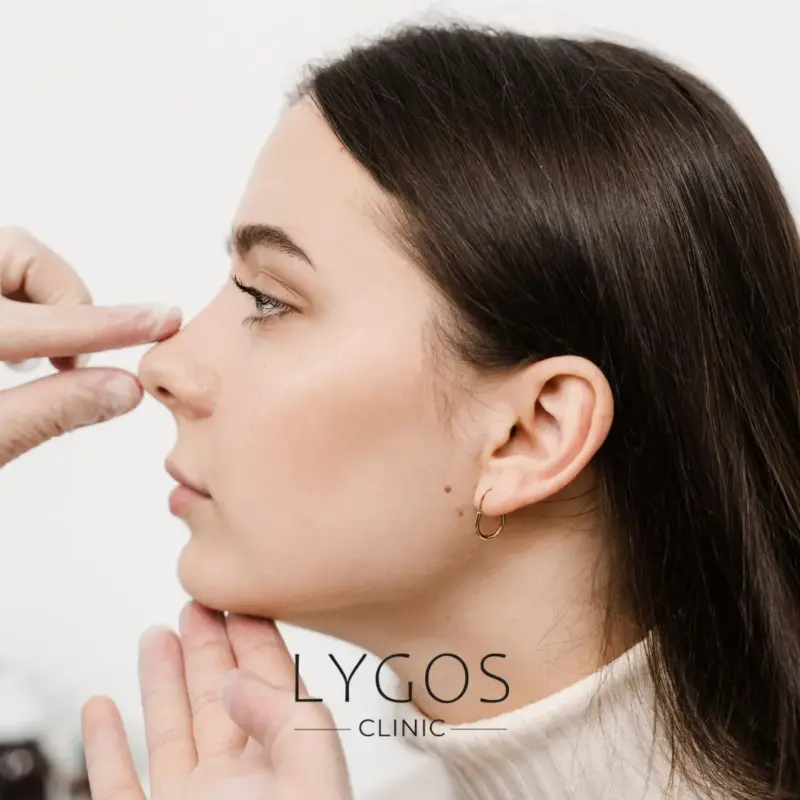After a rhinoplasty, when does breathing improve?

When does breathing improve after rhinoplasty?
The nose surgery performed for aesthetic purposes or to address health issues, known as rhinoplasty, is a commonly performed surgical intervention today. This operation can be chosen to correct the shape of the nose, balance facial features, or address breathing problems. However, the ability to breathe after rhinoplasty is a significant concern for patients. The process of breathing after rhinoplasty varies depending on several factors.
The complexity of the surgical intervention, the techniques used, the patient’s overall health condition, and the surgeon’s experience are significant factors that influence how the process will unfold. During the post-operative period, temporary swelling and bruising around the nose can affect the patient’s breathing experience.
“Although rhinoplasty generally aims for both aesthetic and functional improvements, the process of recovery regarding breathing varies from individual to individual. Being patient during this process and adhering to the surgeon’s recommendations are crucial factors in achieving the desired outcome. In this article, we will delve into the process of breathing after rhinoplasty in more detail and provide information to help patients better understand this process.”
The Type and Scope of Surgery
Nose aesthetic surgery is a surgical intervention that can be performed in various types and scopes. Rhinoplasty procedures can include different surgical methods, typically determined based on the patient’s expectations and needs. These operations can range from minimal corrections focusing solely on nasal aesthetics to more extensive procedures involving both aesthetic and functional improvements.
The type and scope of a rhinoplasty surgery vary depending on the patient’s nasal structure, skin type, nasal issues, and expectations. Some patients may only want aesthetic correction of the nose shape, while others may also want to address functional issues like breathing problems. The type of surgical intervention significantly influences the complexity and process of the operation. At this point, it’s important to have a detailed discussion with your surgeon and obtain information about the type of operation. Your surgeon will share with you how any improvements for breathing problems will be included in the surgical plan alongside nasal aesthetics. This will help you better understand your post-operative expectations and the breathing process.
Complications of Surgery
Nose aesthetic surgery, like any surgical intervention, carries certain risks. Among these risks are complications that may arise during or after the surgery, which can affect breathing ability. However, these complications are typically rare and even less likely in rhinoplasty operations performed under the supervision of an expert surgeon. Complications that may occur during surgery include general surgical risks such as anesthesia reactions, bleeding, or infection.
“These situations are carefully monitored by the surgical team and intervened if necessary. After surgery, symptoms such as swelling, bruising, and temporary numbness may occur. These types of symptoms typically improve over time and are part of the normal healing process. Regardless of how complex the surgical intervention may be, the likelihood of such complications affecting your breathing ability is low.”
“These situations are carefully monitored by the surgical team and intervened if necessary. After surgery, symptoms such as swelling, bruising, and temporary numbness may occur. These types of symptoms typically improve over time and are part of the normal healing process. Regardless of how complex the surgical intervention may be, the likelihood of such complications affecting your breathing ability is low.”
Healing Process and Swelling
The healing process after rhinoplasty generally involves a decrease in swelling and bruising, along with an improvement in breathing ability. However, this process can vary depending on individual factors. In the first few days, swelling and bruising in the surgical area are normal. Depending on the type of surgery, the individual’s overall health condition, and the speed of recovery, these symptoms may vary.
In the first few days after surgery, focusing on rest and following the recommended care instructions is important. Keeping your head elevated as advised by your surgeon and using cold compresses can help reduce swelling and bruising. Breathing ability during the healing process is particularly associated with the healing of the mucosa inside the nose. It may take several weeks or months for swelling and swelling to completely subside.
During this time, it’s important to attend regular follow-up appointments as recommended by your doctor to allow for the healing of the tissues inside the nose. Paying attention to nasal hygiene is important to expedite the healing process of breathing ability. Using nasal sprays recommended by your doctor or performing nasal irrigation with saline solution can contribute to the healthy healing of the mucosa.
In conclusion, the healing process after rhinoplasty can vary depending on individual factors, the complexity of the surgical intervention, and the person’s body response. However, adhering to your doctor’s recommendations, resting, and paying attention to the specified care instructions can support a healthy recovery process.
Professional Monitoring and Rehabilitation
The professional monitoring and rehabilitation process after rhinoplasty are shaped by your surgeon’s regular check-ups. These check-ups are of critical importance to assess your post-operative healing process, identify potential issues early, and intervene if necessary. The follow-up program your surgeon establishes typically begins within the first few weeks after surgery. During these appointments, both nasal aesthetics and your breathing function are evaluated.
Your surgeon monitors the healing process of the mucosa inside the nose and can intervene immediately if any signs of problems arise. Professional monitoring aims not only to minimize potential complications but also to enhance patient comfort. Your surgeon will regularly communicate with you to address any questions or concerns you may have during the post-operative period.
The rehabilitation process may include exercises recommended by your surgeon to accelerate the healing process and maximize breathing ability. These exercises may aim to increase the flexibility of tissues inside the nose and support breathing.
In conclusion, professional monitoring and rehabilitation are of critical importance to identify and resolve any issues that may arise after rhinoplasty. Not skipping the check-ups recommended by your surgeon and seeking their advice in case of any doubts are key to supporting a healthy recovery process.
Breathing after rhinoplasty
The ability to breathe after rhinoplasty can vary depending on several factors and differs from person to person. The type and scope of the surgical intervention, the individual’s overall health condition, and the healing process influence expectations in this regard. The recovery process varies depending on personal factors, and the time it takes to return to normal can vary from person to person.
Staying in regular communication with your surgeon allows you to understand and manage your expectations regarding breathing after surgery. Adhering to the follow-up program established by your surgeon is crucial for early detection and resolution of potential complications. Professional monitoring is important to enhance patient comfort and ensure a healthy recovery process.
It should be remembered that achieving a healthy breathing process after rhinoplasty is a patient process. Professional assistance, proper rehabilitation, and patience are key factors for healthy breathing after rhinoplasty. Paying attention to your surgeon’s recommendations and seeking professional help in case of any concerns are always important for a healthy and conscious recovery process. We wish you good health.




